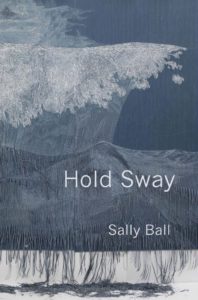
“Beautiful in its compression, the [opening] poem also explores one of the possibilities of lyric poetry: it shows the poem as the site in language where the mind forms a temporary, even imaginary solution to a stubborn problem. Here the mind, like the light, creates beauty while also playing a deft trick on itself… [but] what logic really can hold us? These questions of how to hold and be held; what holding is; and how to tether ourselves govern the rest of Ball’s collection. Her poems are often breathtaking…”
—Tess Taylor, New York Times
“Hold Sway gives us that moment when our inner life meets the elements, meets something much vaster than ourselves, in poems as fearsome as they are astounding in their beauty. But many books can be beautiful. What moves me here is the clear voice, which speaks to me directly, without patronizing. I love how the nuanced journey into the world of one’s mind quickly becomes an acute social commentary, and the direct, uncompromising look which this poet takes at us, at our lives. Watch it! one poem implores: I love the cool bravery with which Ball watches us.” —Ilya Kaminsky
“Systems gone awry, landscapes natural and constructed, depletion of resources material or emotional: all propel this keening of daughter, mother, lover, self: a ‘clenched musculature of daily competence’ whose gorgeous heartsong brims with sadness and wisdom. Sally Ball is a poet of true vision. The restless river of her voice, ‘a body that unfurls even as it’s held,’ entreats, ‘Let us be a we’; here are vital poems as stays against forces we face simply for being alive, temporary, human.” —Katrina Roberts
“The poems in Hold Sway are full of living. They are troubled and attuned to the consequences of that trouble, willing to admit: ‘To thrive now / means actually to wreck / the future for everyone else.’ And yet, within the same poem, the speaker offers language that is vulnerable in its generosity: ‘I saw two / great blue herons / yesterday // and all day today / I’ve wanted to tell you.’ What do our wonderings and makings mean? What can our art and its process bring to the breaking of self and world? Ball is not seeking a remedy; rather, she is building a demand to look beyond ‘naming what you’ve done,’ an imperative which constantly reveals the core of this collection, ‘[her] own heart unanswered.’ Somewhere in all of her unmade and unmaking is a space where we might find ourselves again or even for the first time.” —Natalie Diaz